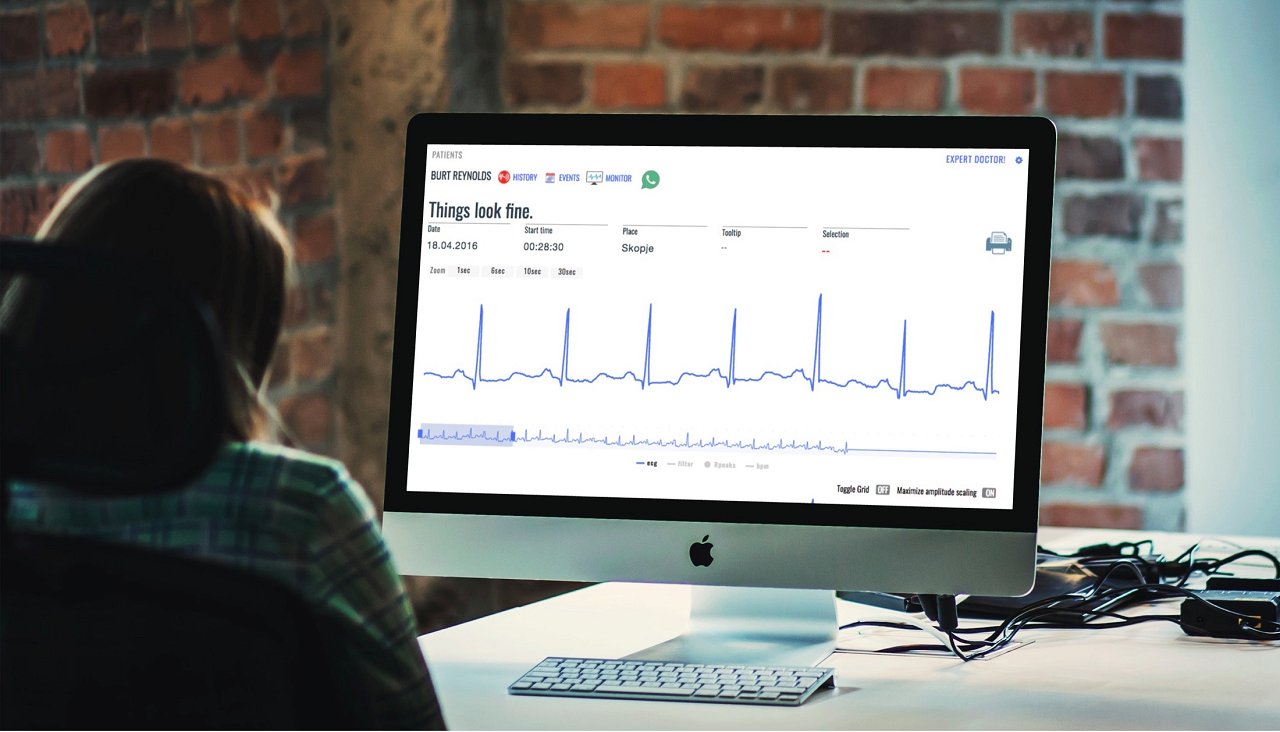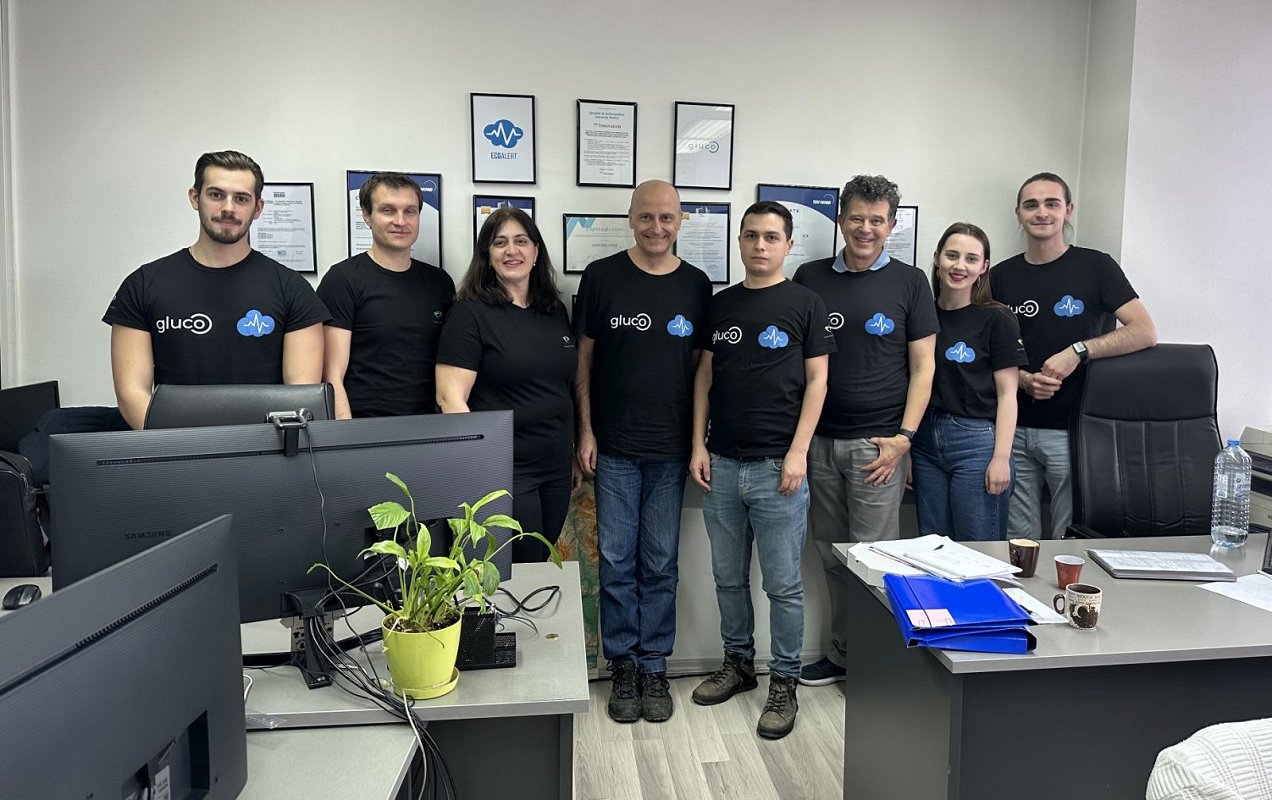Real-Time Heart Monitoring of Thousands of Patients
A heart monitoring center for remote long-term continuous monitoring of patients in their home environment outside of a hospital, based on wearable ECG sensors will shorten hospitalization time and prevent serious heart damages, providing better healthcare. A large-scale demonstration of processing 10K simultaneous ECG data streams with real-time responses implementing efficient methods and approaches on HPC resources capable of processing several TFLOPS for computationally-intensive signal processing algorithms to classify arrhythmia was carried out.
SECTOR: Healthcare
TECHNOLOGY USED: HPC, HPDA
COUNTRY: North Macedonia
The challenge
The primary purpose of ECG monitoring as a widely used diagnostic tool is to detect arrhythmias and alert for a potentially life-threatening heart condition. This is essential to ensure timely and effective treatment and prevent serious heart damage. However, usually patients need to stay in the hospital for monitoring. Innovation Dooel’s ViewECG is a unique medical software based on real-time ECG data from wearable sensors, using Signal Processing and Machine Learning (ML) techniques for detecting heart arrhythmias, that permits patients to follow their everyday routine, while giving them peace of mind knowing that their heart condition is continually monitored. This gives ViewECG a clear business advantage.
So far, ViewECG has been successful in monitoring dozens of users concurrently processing a large amount of ECG data. However, two main challenges arise with the exploitation and wider deployment. Firstly, there is a need to improve the existing ML arrhythmia classification model, which would require training on an extensive benchmark dataset with hundreds of gigabytes of input data and taking hundreds of days on Innovation Dooel’s infrastructure. Secondly, for scaling up to many more users, the solution deployment needs a large-scale computing capacity to efficiently process an enormous number of concurrent ECG data streams in less than 3 seconds for each request. This has not yet been achieved in the market.
The solution
The consortium has used High-Performance Computing (HPC) to solve both business challenges. GPU-based HPC (using in total around 11,000 core hours and 5,200 GPU hours) was used to train a new ML model to detect specific heart arrhythmias, improving its accuracy and reducing the error rate by 50%. It was also used to deploy the new ViewECG solution, which unlike the initial SME approach, which used simple resource replication to achieve the desired response, was upgraded by developing a new HPC solution that efficiently processes thousands of incoming ECG streams with high velocity and data volumes and a container-based service whose workflow manager handles multiple HPC systems. This service system avoids redevelopment and replicated administrative tasks across heterogeneous servers.
To develop the solution, the National Competence Centre North Macedonia has provided expertise in deploying this HPC-enhanced Data Analytics solution, and the University of Klagenfurt has assisted in realizing a scalable solution through various serverless HPC systems and a workflow manager.
Business impact, Social impact, Environmental impact
The experiment realized a solution that ensures operational resilience with a robust solution for easy business scale-up. The new service reduces the costs for system administration, software upgrades, and maintenance, resulting in a more efficient and profitable business.
Thanks to the achieved scalability boost to tens of thousands of users, in particular the ability to handle the associated ECG analysis requests concurrently, Innovation Dooel expects to double their revenue through additional sales. The improved arrythmia detection, reducing errors by 50% and achieving an accuracy of 90%, will significantly increase the competitiveness of Innovation Dooel’s service.
Through this new service, medical doctors can simultaneously keep a close eye on the health status of multiple outpatients who thus receive personalised care and attention from a medical professional without requiring physical presence in a hospital, thereby reducing costs to the health system significantly. In particular, the service will contribute to early detection of dangerous arrhythmias to prevent severe heart damage, improving overall healthcare and increasing life expectancy.
Benefits
- Innovation Dooel expects to double its revenue by selling the new service, which now scales to tens of thousands of users.
- 50% error reduction and 90% accuracy lead to a more competitive product with significant improvement in arrhythmia detection.
- 25% increase in efficiency and profit due to reduced costs for processing an incremented workload with reduced software administration.
Organisations involved:
End user: Innovation Dooel
HPC expert: University of Klagenfurt
National HPC Competence Centre: Ss Cyril and Methodius University in Skopje
Partner Ss Cyril and Methodius University in Skopje is part of the North Macedonian NCC.



